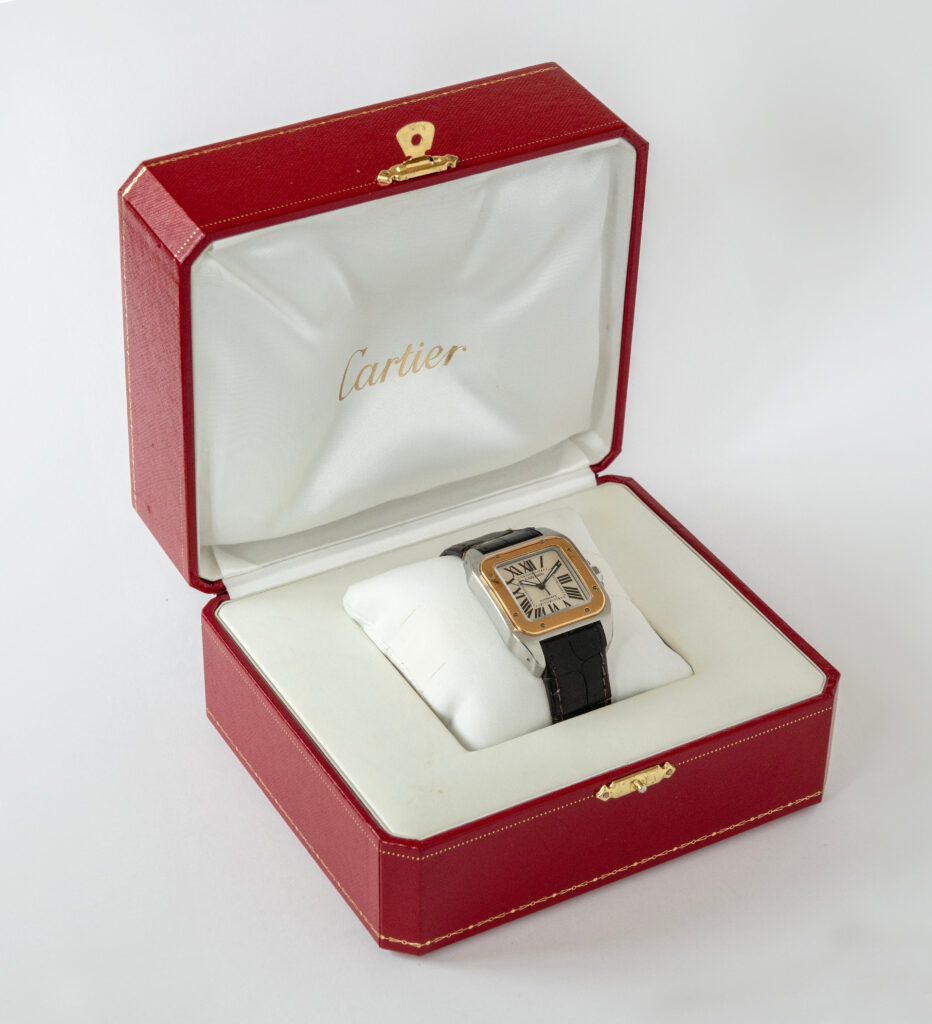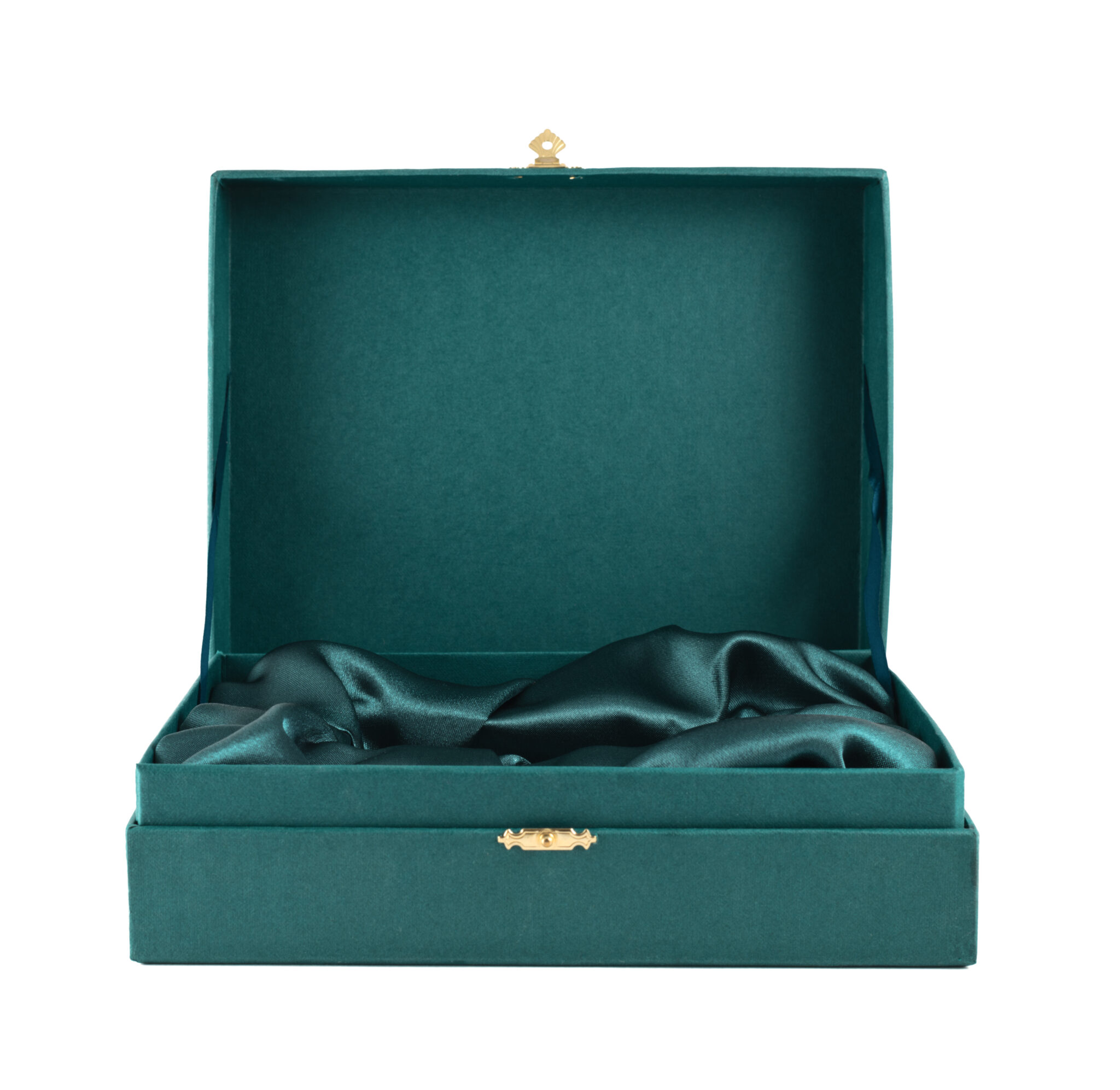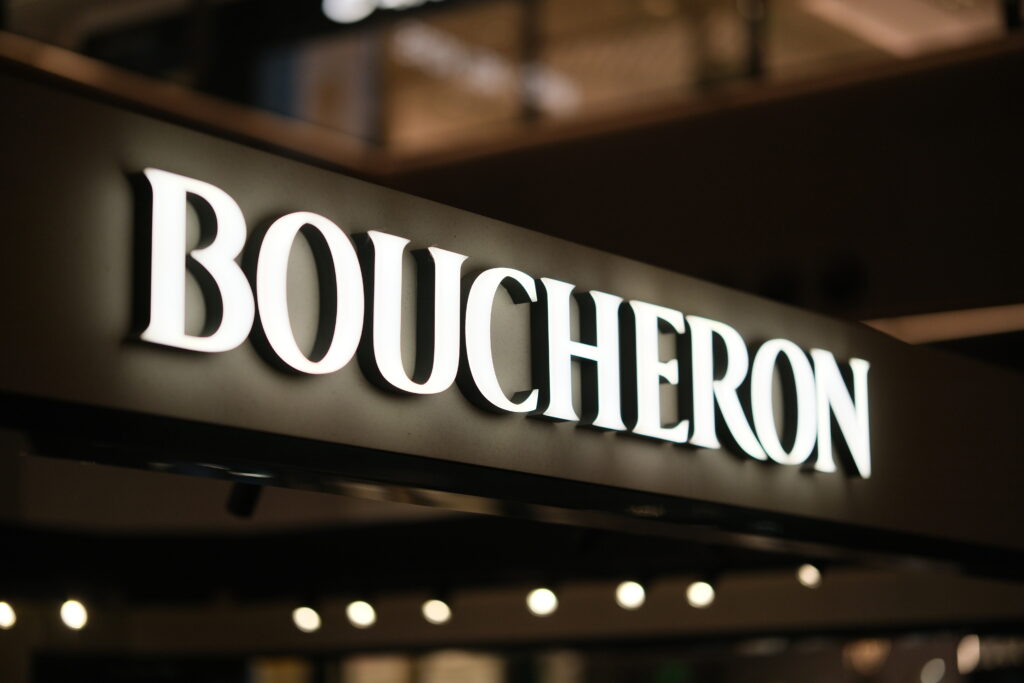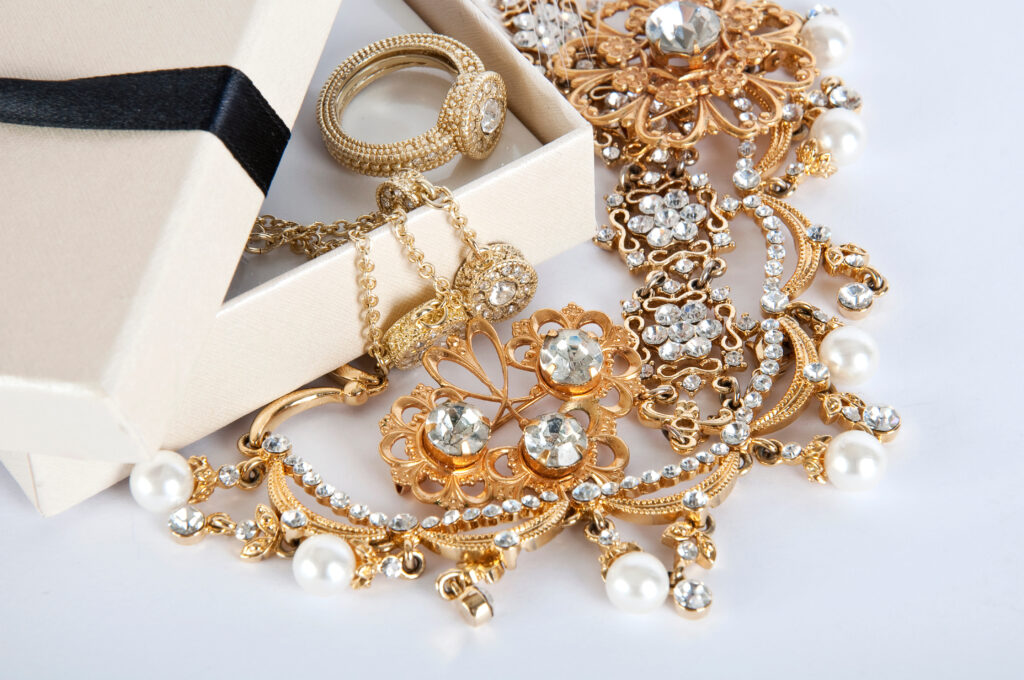When you think of boxed jewellery, you likely picture an elegant ring, necklace, or bracelet inside a beautifully crafted case. However, these cases are often far from simple decorative accessories. If you’re considering selling your jewellery, understanding the significance of its original box could be the key to securing the best possible price.
What is Boxed Jewellery?
Boxed jewellery refers to a piece that comes with its original, branded packaging, just as it was presented when first sold. A boxed jewellery set typically includes multiple pieces, such as a matching necklace and earrings or a bracelet and ring. These will all be housed in a specially designed case that complements their style and brand identity.
Having the original packaging increases both authenticity and desirability. This is particularly true for luxury and designer jewellery brands, where the box itself can be considered as iconic as the piece or pieces inside. Some of the most sought-after boxed jewellery names include:
- Cartier: This is recognisable by its signature red leather box with gold detailing.
- Van Cleef & Arpels: These are known for their soft, elegant suede or leather presentation cases.
- Tiffany & Co.: These are instantly identifiable by the distinctive Tiffany Blue® box, a symbol of timeless luxury.
The Importance of the Box in Valuations
Many sellers overlook the significance of original branded packaging, yet it plays a crucial role in authentication, credibility, and ultimately, the final price offered in the event of a professional evaluation.
Proof of Authenticity
A branded jewellery box serves as a valuable indicator that a piece is original and has been properly sourced. When paired with matching hallmarks, serial numbers, and certificates, the box acts as a supporting piece of evidence that the jewellery is genuine.
Owning a Cartier diamond ring in its original red leather box or a Tiffany bracelet in its signature blue case instantly verifies that the piece is linked to the brand and was likely purchased from an official boutique rather than an unknown secondary source.
Credibility and Perceived Value
Original, well-preserved packaging suggests that the jewellery has remained complete, with all its original elements intact. In turn, this reassures the observer that they’re valuing a legitimate, well-cared-for piece, reducing doubts about authenticity. This is particularly important for:
- Vintage and antique jewellery, where the box can indicate a specific period or retailer.
- Limited edition pieces, as these often come with exclusive packaging that makes them more collectable.
- Luxury designer jewellery, where branding and presentation significantly impact the item’s resale value.
What a Box Says About Jewellery Care
The state of a jewellery box can also influence how a valuer perceives the piece inside. A pristine, well-kept box suggests that the jewellery itself has been carefully maintained over the years, free from excessive wear, damage, or neglect.
On the other hand, missing or severely damaged packaging might raise questions about how the jewellery has been handled and stored, or even whether it has been swapped or altered over time.

How the Box Affects Market Demand and Resale Value
When purchasing luxury, vintage, or antique jewellery, buyers are not just investing in the metal and gemstones. They are also paying for the piece’s history, prestige, and collectibility.
Beyond this, a collector might also wish to keep the box to protect future resale value. As many pieces of jewellery will retain value over time, having its ideal storage not only protects the piece or pieces to maximise resale value at a later date but also adds to the amount a seller is likely to receive.
Other Forms of Identification That Boost Jewellery Value
While a jewellery box plays a crucial role in upping a piece’s value, it is not the only factor that can make a difference. Beyond packaging, several other key forms of documentation and identification can help prove a piece’s authenticity, craftsmanship, and provenance, making it far more attractive to buyers and collectors.
Certificates of Authenticity
For high-value jewellery, a certificate of authenticity can be just as important as the item itself. These certificates, issued by trusted jewellers or gemological institutes, provide verified details about a piece’s composition, quality, and origin.
Some of the most reputable certification bodies include:
- GIA (Gemological Institute of America): This institute is among the gold standard for diamond grading, offering reports on carat weight, cut, clarity, and colour.
- IGI (International Gemological Institute): This institute is widely recognised for grading diamonds, gemstones, and fine jewellery.
- HRD Antwerp: This is a leading European institute for diamond certification.
- Jewellery brands themselves: Luxury houses like Cartier, Boucheron, or Bulgari often provide certificates upon purchase.
Hallmarks and Maker’s Marks
Jewellery hallmarks and maker’s marks provide a built-in form of authentication, offering insights into the origin, metal content, and craftsmanship of a piece. These small but significant stamps are usually found on the inside of rings, the backs of pendants, or near clasps on bracelets and necklaces.
- Hallmarks: These indicate the purity of precious metals (e.g., 18ct gold, 925 silver).
- Maker’s marks: These show which jeweller or brand created the piece, helping trace its origin.
- Assay office marks: Some jewellery carries marks from official assay offices (such as those in London, Birmingham, or Edinburgh), further verifying authenticity.
Purchase Receipts and Provenance
The story behind a piece of jewellery can be just as valuable as the materials it’s made from. Buyers, especially those investing in antique or rare pieces, are often willing to pay more for jewellery with provenance documentation that traces its history.
Key documents that enhance value include:
- Original purchase receipts: These confirm where and when a piece was bought, verifying its authenticity.
- Previous appraisals: If a piece has been professionally valued before, this provides additional credibility.
- Ownership history: Jewellery with a known connection to a notable person or a specific historical period can see a significant jump in value.
- Auction records: If a piece has previously been sold at a major auction house, this can further validate its significance.
How to Preserve and Present Your Boxed Jewellery for Maximum Value
Owning boxed jewellery can significantly increase the value of your pieces. However, this is only if the box itself is well-preserved. Just like the jewellery inside, the original packaging needs to be kept in pristine condition to retain its appeal. A damaged or heavily worn jewellery box can diminish the perceived value of even the most exquisite items.
By following a few simple steps, you can ensure that your jewellery and its box remain in top condition, making them more desirable when it comes time to sell.
Store Jewellery Boxes in a Safe, Controlled Environment
The materials used for jewellery boxes, such as leather, velvet, and silk linings, are delicate and susceptible to damage over time. To keep them in excellent condition, follow these best practices:
- Avoid direct sunlight: Prolonged exposure can cause fading, discolouration, and deterioration of fabric linings.
- Control humidity levels: Excess moisture can lead to mildew, especially on velvet or suede interiors. A dry, cool storage space is ideal.
- Keep away from heat sources: High temperatures can warp certain materials and weaken adhesives over time.
- Use acid-free tissue paper: Placing tissue paper inside the box can help prevent compression marks and preserve its shape.
Handle Boxes with Care to Prevent Wear and Tear
Luxury jewellery boxes are often made from high-quality materials but can still suffer from handling damage. To preserve their condition:
- Avoid stacking heavy objects on top of them, as this can cause crushing or deformation.
- Minimise handling, as repeated opening and closing can cause wear to hinges, clasps, and internal padding.
- Use clean, dry hands, as oils and moisture from fingers can stain or degrade delicate materials.
- Store in dust-proof containers; if not in regular use, placing jewellery boxes inside a protective case can prevent dust buildup and accidental scratches.
Protect the Jewellery Inside to Maintain Long-Term Value
While caring for the box is crucial, it’s equally important to store the jewellery correctly to prevent damage over time.
- Use the original slots and compartments: Jewellery boxes are designed to protect specific items, so rings, earrings, and necklaces should be stored in their designated spaces.
- Avoid tangling and scratching: If your jewellery set includes multiple pieces, ensure they are properly secured to prevent them from rubbing against each other.
- Keep clasps closed and pieces secured: This prevents delicate items from shifting and getting damaged inside the box.
- Regularly check for signs of wear: Even when stored carefully, it’s good practice to inspect jewellery periodically for any signs of tarnishing or weakness in clasps and settings.
Present Your Boxed Jewellery Professionally When Selling
Buyers and valuers will assess the overall condition of both the jewellery and its packaging, so it’s important to showcase them properly:
- Clean the exterior of the box gently using a dry microfiber cloth.
- Ensure all branding, logos, and embossing are visible.
- Place the jewellery carefully inside, as it would have originally been displayed.
- Include any documentation (certificates, receipts, or appraisals) alongside the piece to enhance its credibility and value.
Are You Ready to Sell Boxed Jewellery?
If you’re considering selling your boxed jewellery, don’t underestimate the value of its original packaging. At Burlingtons Ltd., we specialise in providing fair, expert valuations and instant payments, ensuring a smooth and hassle-free selling experience. Our free home valuation service allows you to discover your jewellery’s true market value, without the stress of auction houses or hidden fees.
Contact us to schedule your free home valuation, and let us help you get a fair price for your treasured pieces.




